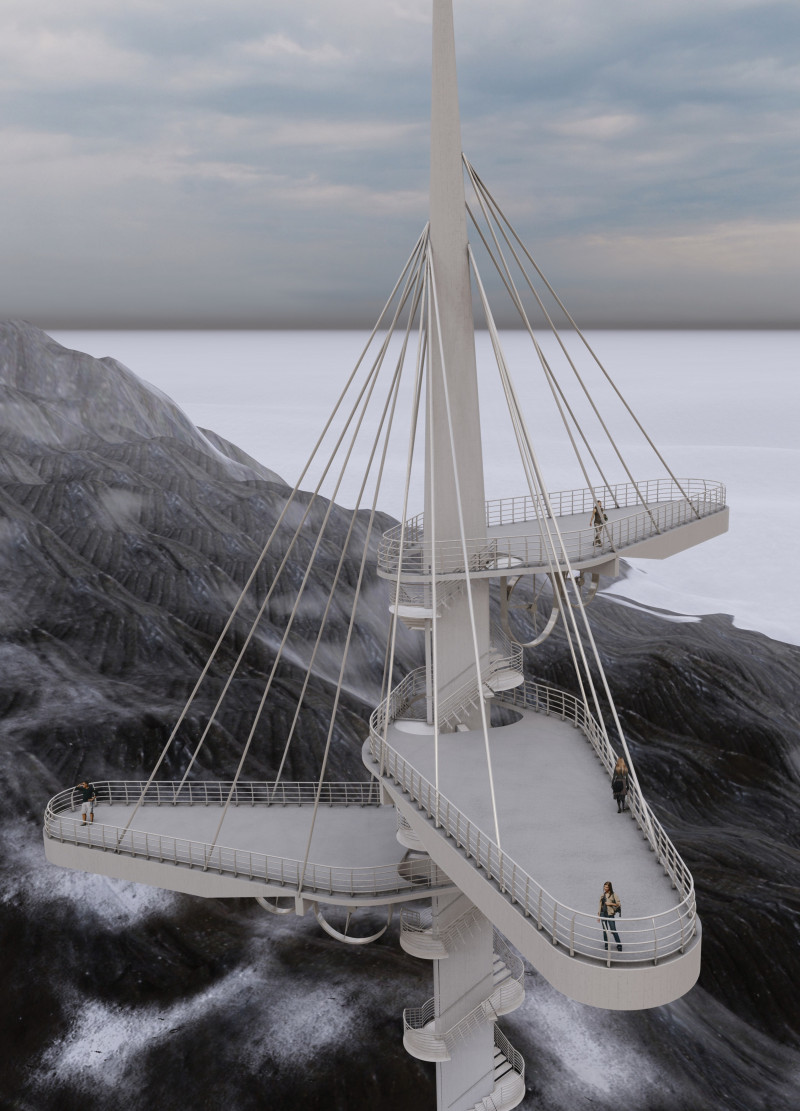5 key facts about this project
The design presents a thoughtful approach to growth and connection, situated in a context that fosters interaction between nature and the built environment. The concept revolves around the phrase, "Rise from the ashes, rise in the sky; out of these ashes beauty will rise." An elevated viewpoint enhances the experience of those within it, creating a structure that serves as a landmark while promoting a dialogue with its surroundings.
Design Concept
At the heart of the design is the idea of natural resilience. The structure emphasizes verticality, allowing it to rise prominently within the landscape. This orientation serves not only to improve the visibility of the building but also to encourage a sense of pride among its occupants. The design closely aligns with the surrounding environment, making it a meaningful addition to the area.
Sustainability Features
Wind turbines play a key role in the sustainable features of the design. These turbines are strategically placed to harness renewable energy, generating electricity for the building. This energy helps in heating the ground during cold weather, providing comfort to users while also benefiting nearby buildings. The commitment to sustainability is evident and reinforces the project’s purpose.
Structural Composition
The structure consists of three main components that work together to provide stability and functionality. A lightweight concrete core serves as the primary support, ensuring that the building remains steady from the ground up. Surrounding this core are slabs and steel beams, which create usable spaces while contributing to the overall design. Cables also play a critical role, stabilizing the building and helping to distribute loads evenly across its form.
Visual Integration
A harmonious relationship exists between the building and its environment. Clean lines and vertical elements reflect the theme of growth, creating an inviting form that responds to its surroundings. The elevated viewpoint allows for appealing sightlines, encouraging engagement with both users and the community. This focus on interaction enhances the experience of the space, making it a significant feature of the landscape.



















































